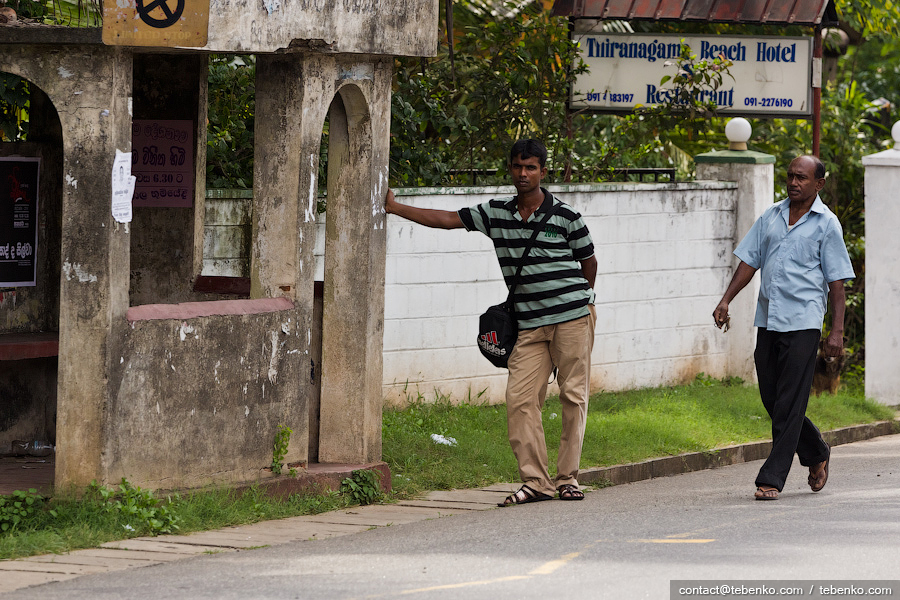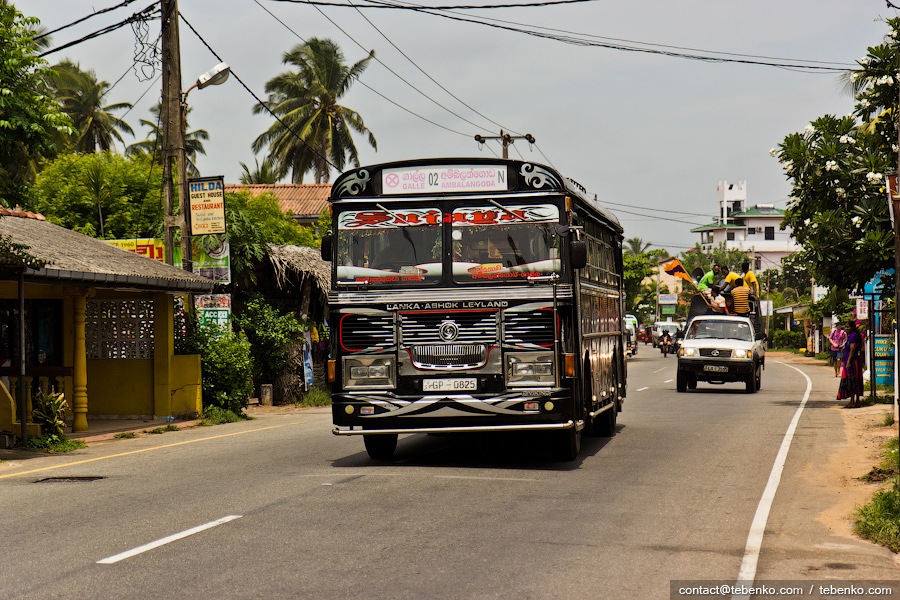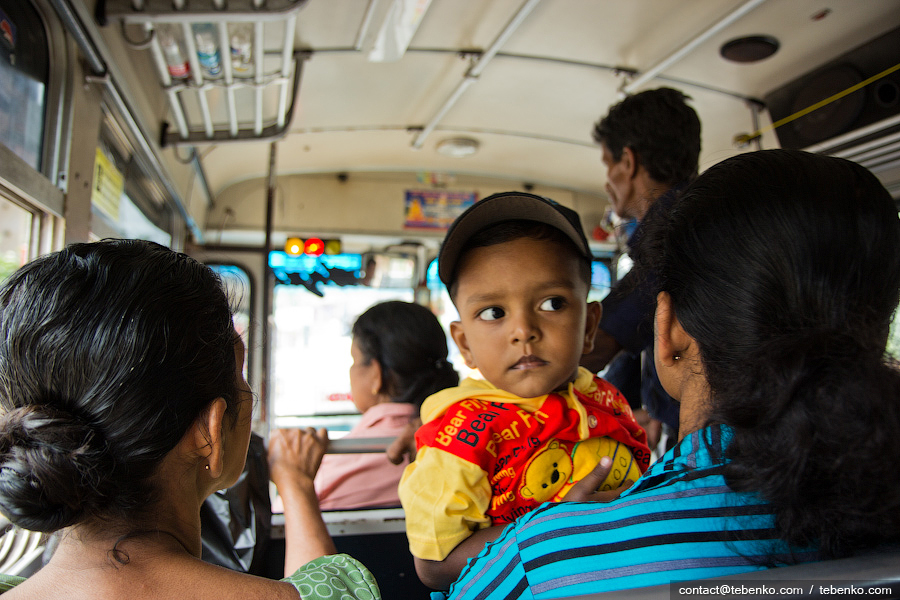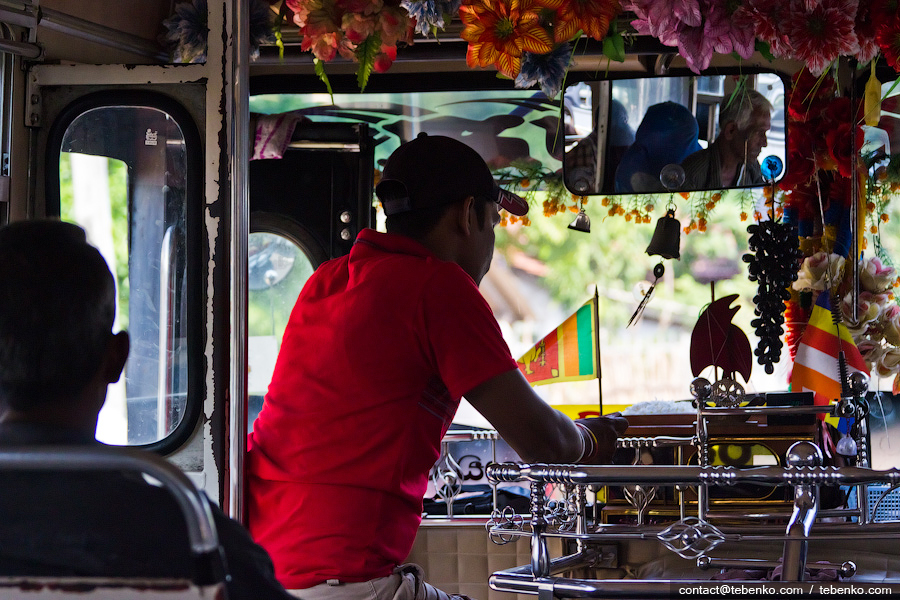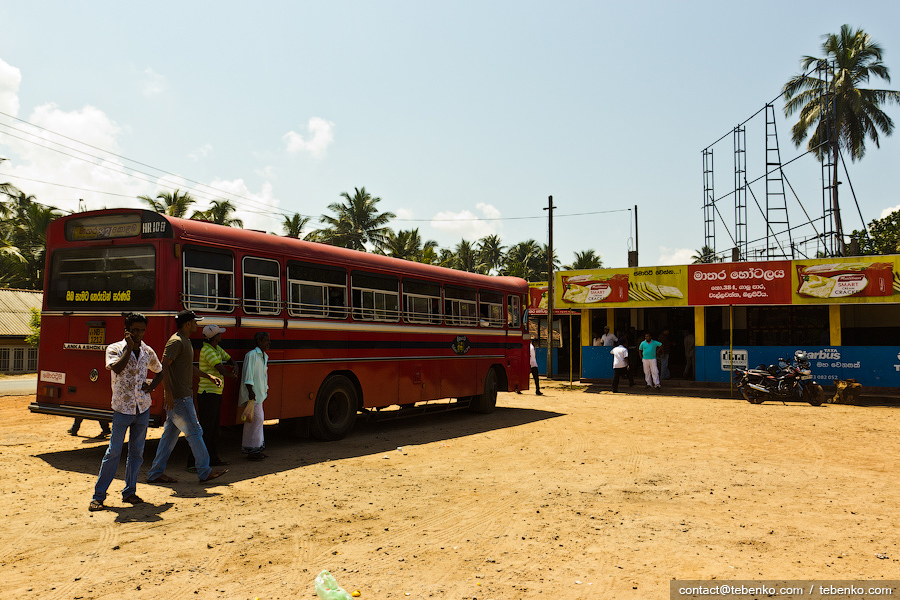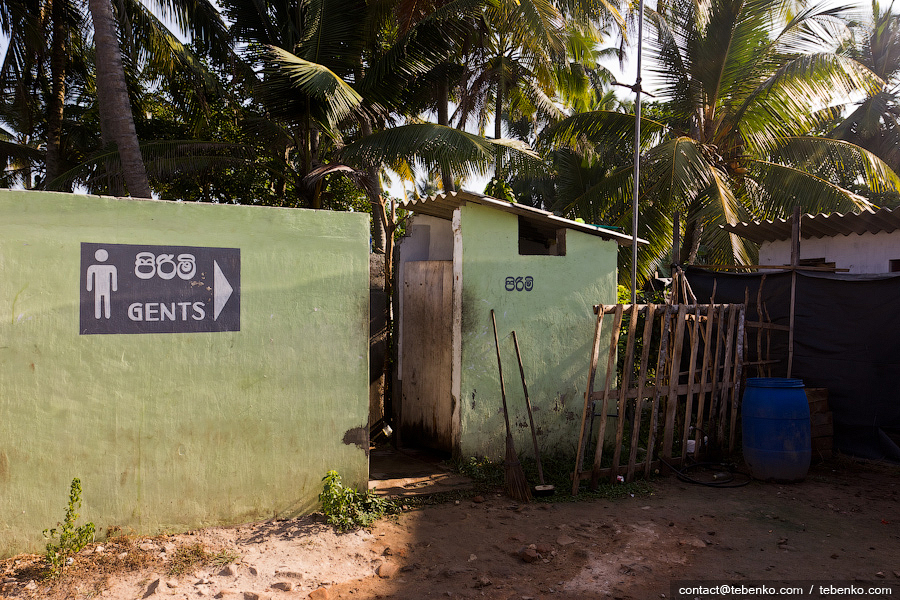Public transport — a true friend and helper tourist. With him you better be on, otherwise will pay taxi drivers, or even risk not reach the destination. Therefore, we feel looking into the face of danger, always trying to explore the most detailed subject. In Indian issues we talked about local buses , and today it was the turn of their Sri Lankan counterparts. Buses in Sri Lanka is the main and, no doubt, the most affordable mode of transport. At least that only you can overcome bus route between two arbitrary points on a map of the island. Railway here at an early stage of development and has few branches. Sometimes the buses move even faster, and the presence of air conditioning, TV and comfortable chair finally tips the scales in their favor.
To successfully use bus you should understand that the island there are two types of stops. The first of them — a bus stop, obturatio normalis, or stop ordinary. Mostly on the following bus stops only hamper local. Long-distance bus stop ignoring these. Ordinary stop can also be identified by special plates and special markup:
 1
1The second type of stops — bus station, obturatio station, or in our opinion — the bus station. As usual, the local bus station consists of several platforms and many buses, although in smaller cities it very difficult to distinguish from normal stops. A reference can be long-distance buses that must stop at these stations. Now that you have skillfully targeting in Sri Lankan bus stop will move to the appropriate landing technology features. Do not expect to see signs with the direction of movement of the bus in English. Use the universal language of numbers, memorize numbers and look them in the appropriate platform.
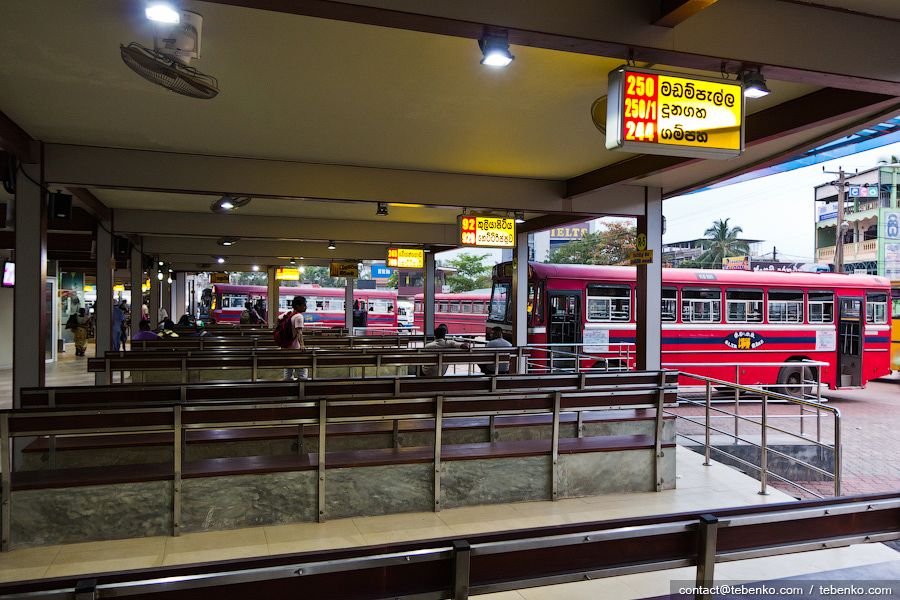 3
3Telephone required bus can be found in several ways. To begin to ask passers-by — if your friend does not speak English at a sufficient level, learn available on the fingers show the numbers from 1 to 999. But remember clearly and pronounce the syllables in the name of the settlement — it works almost always. Another reliable source of information can be a special unit bus workers who are engaged in sending buses. Usually, these people live in special booths. Another good, although not quite understood us version — is to use the advice of police.
Now we have to orient themselves in the classification buses. Among the variety we identified 4 major classes (it's their group photo):
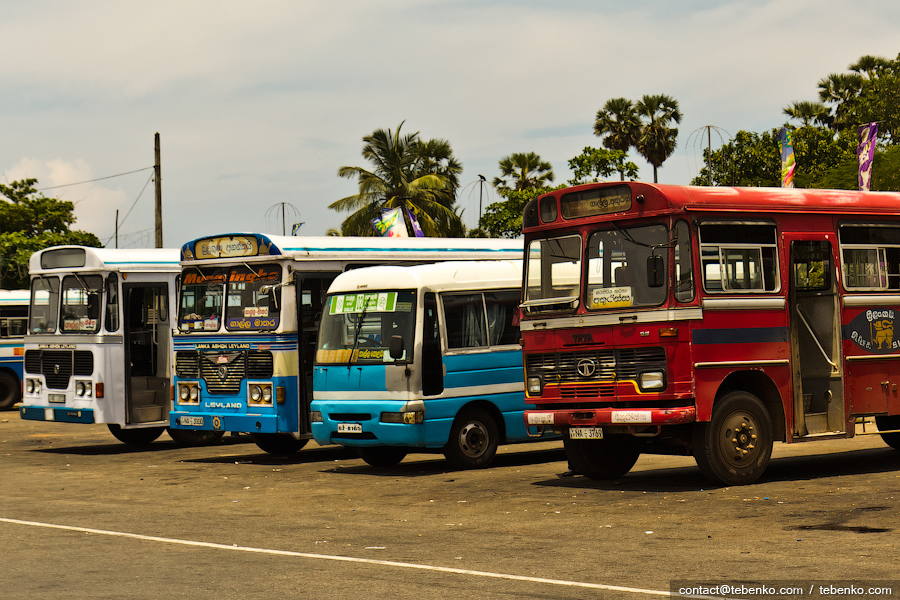 4
4Ordinary buses (average speed of 20-25 km / h) — divided into buses near and far followed. The lack of air conditioning offset a large number of open windows and even more passengers. These buses stop at any stop on request:
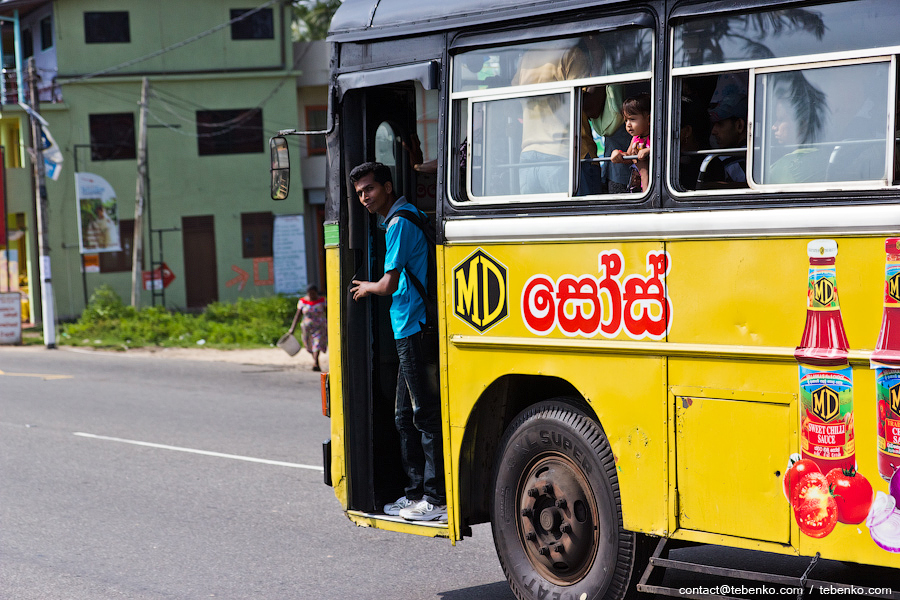 5
5Almost all Sri Lankans have the ability to keep one hand on the handrail and the other — pose for the camera:
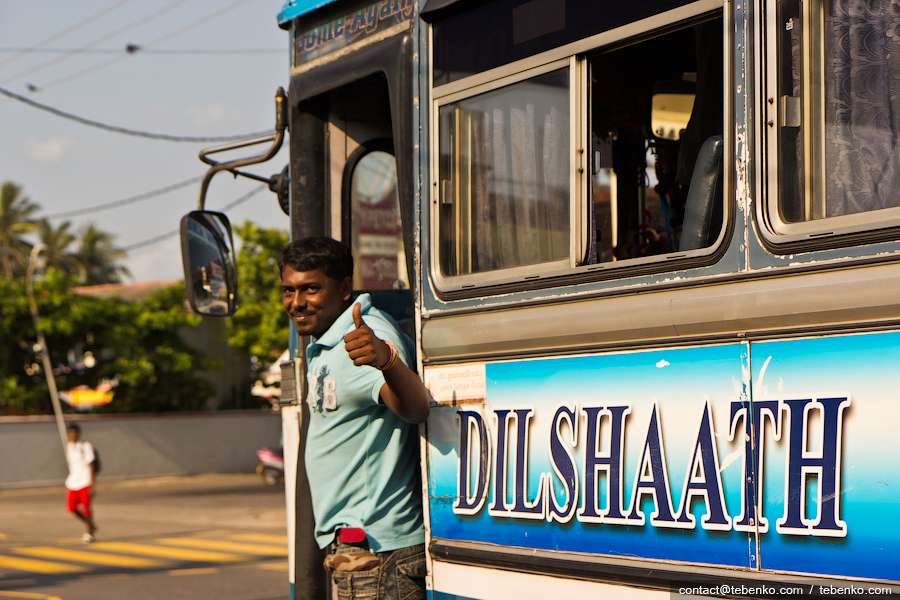 6
6Express — Buses that travel long distances at high speed — about 30-35 km / h and one who will say that it is — a little speed, let him first cast us one hundred dollar bills. Express trains carry out the minimum number of stops with maximum braking and with the same start, this time moving passengers around the cabin as dummies in crash test, only without seat belts. Ticket price for express usually slightly higher than the usual bus:
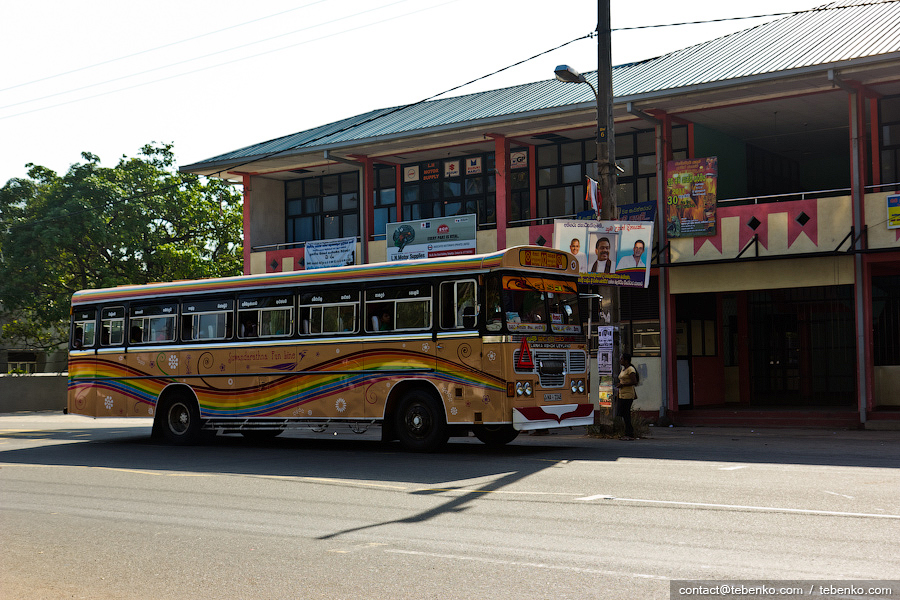 7
7Air-conditioned bus — the same express, but with closed windows, air conditioning and double fares. For the most part, are small buses that are very similar to our bus.
 8
8In general, all private entrepreneurs working on the following algorithm. Approaching the next stop, the conductor lists the number of seats available and if their number is greater than zero, the doors open and the conductor begins to shout the names of all settlements, traveling through the bus.
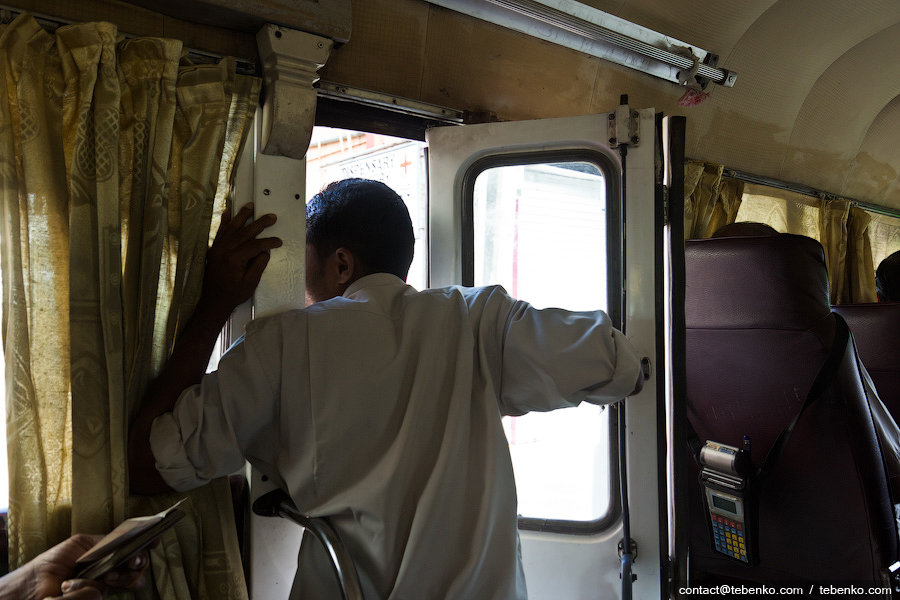 9
9"* Landmark bass" — very interesting type of blackjack and buses… But no, it was not in Sri Lanka. Learning to ride rough fare, sitting in the bus, we have prepared in advance the required amount to avoid paying additional fees. However, the sum of the guard called us half as much. We tried to explain that his premium pay our plans are not included, because we know how much travel. We must pay tribute to the conductor — he kept a stiff upper lip and in every way tried to explain why he is right. As konduktorskyy English vocabulary was limited to purely numbers, his enthusiasm soon began to fade. Taking pity on quite desperate conductor, we decided to take the help of the hall, I mean — cabin. It was found that an additional fee is charged for the possibility of watching TV during the trip. Of course, it fundamentally changed the business, culture — business sacred. The required additional amount from our wallet migrated to poveseliloho conductor, and we enjoyed watching all the way music videos Sri Lankan artists:
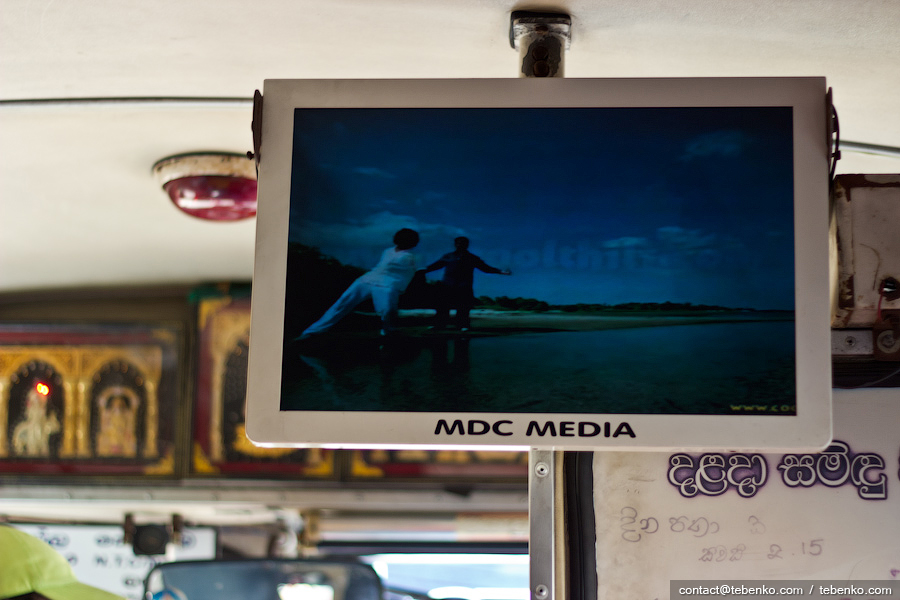 10
10The other fundamental differences "* landmark bass" from "express bus" we did not find, although we actively assured that all seats in the suite is much more convenient.
Ordinary and express buses by ownership divided into public and private. They are very easy to distinguish for coloring — private painted original and colorful. Statesmen are usually conservative supporters shades of red:
 11
11Standard interior private bus is mostly bright appearance, many colors and different icons, the music that you hear on all sides, and, of course, soft chairs:
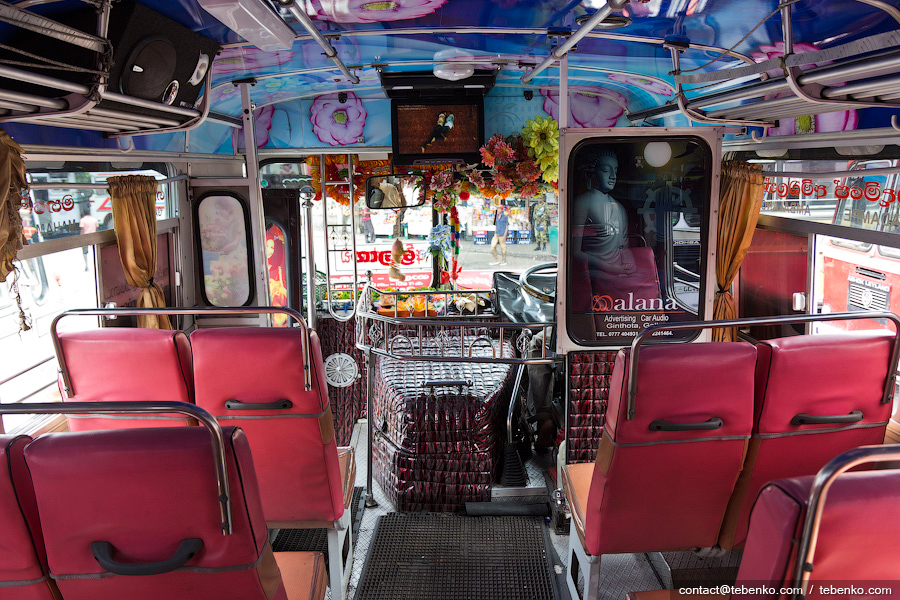 13
13In this regard, public buses are not as stylish, their salons modest, although passengers are sometimes surprised by the presence of one or more musical columns:
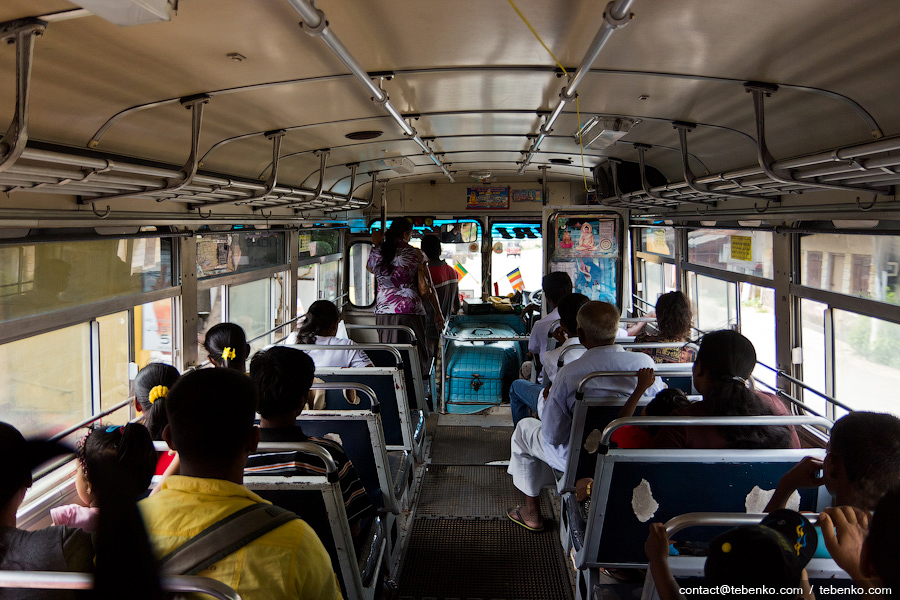 14
14By the way, the system alerts the driver of your intention to leave the bus similar to Indian. No need to run through the entire interior or yelling "On the next!". You civilized pulling the rope — over the ear of the driver starts to ring the bell. A particularly advanced in the salons of buses can be found squeak latest nanotechnology — buttons:
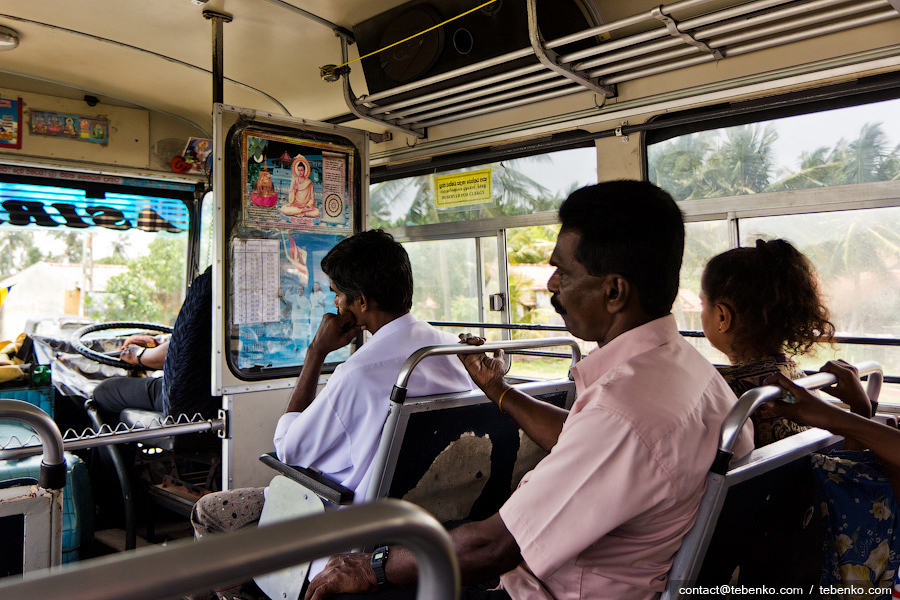 15
15Purchase tickets at the bus station as well as a conductor in the bus. The latter, for the most part, you should have an electronic cash register, which coupons you make happy with the cost and length of trip:
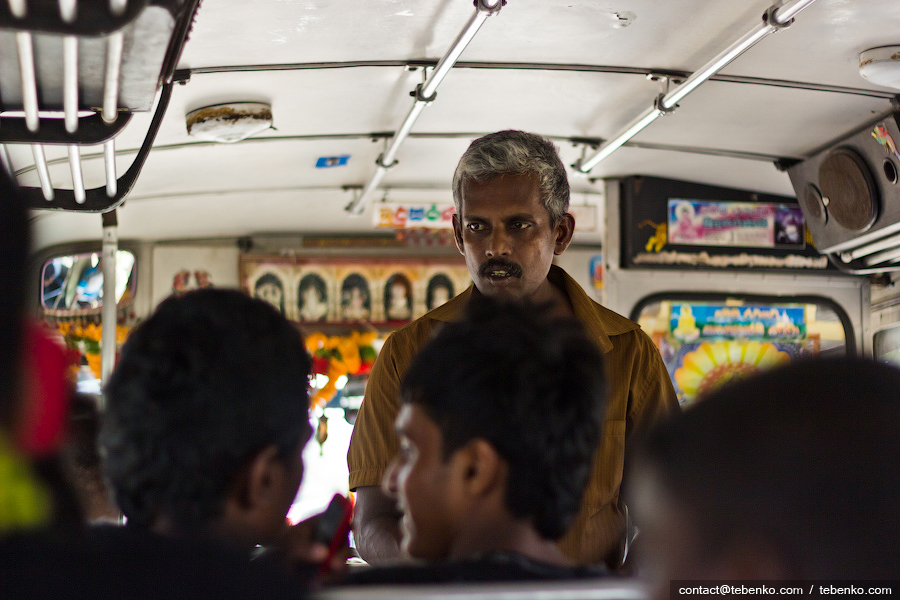 17
17Long-distance buses do stop sometimes up to 30 minutes so that passengers could pidzhyvytysya, smoke and the need to make. So be careful — if you need to go to a neighboring village, do not sit on distant bus. You can "be lucky enough" and 5-10 minutes away you will again be on the sidelines for half an hour and still enjoy driving buses.
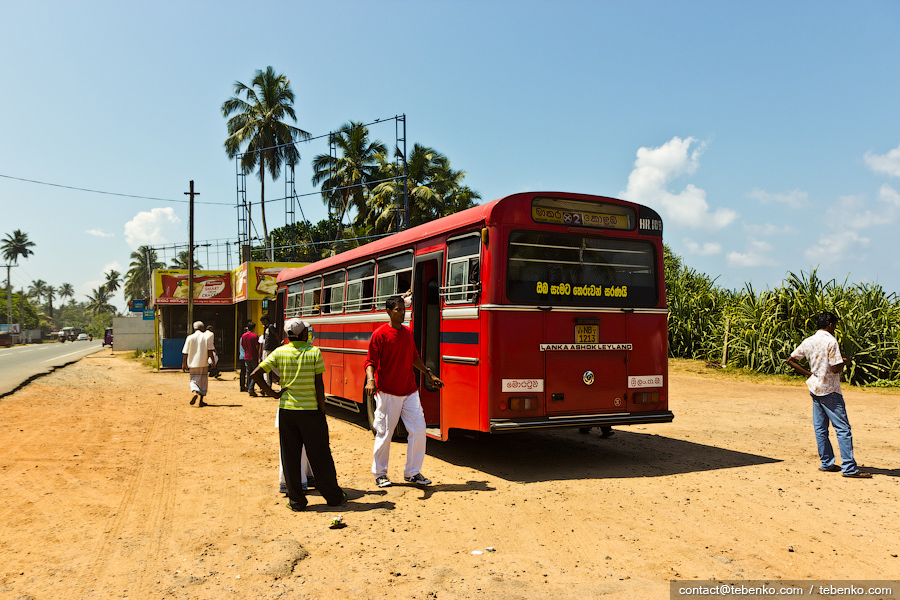 19
19Roads on the island mostly double row — one lane in each direction. Since the private sector fight for passengers is very active, express buses trying to drive at maximum speed, overtaking the nation with rickshaws, passersby and other slower road users. So first you'll put it mildly, awkward manners of the local drive.
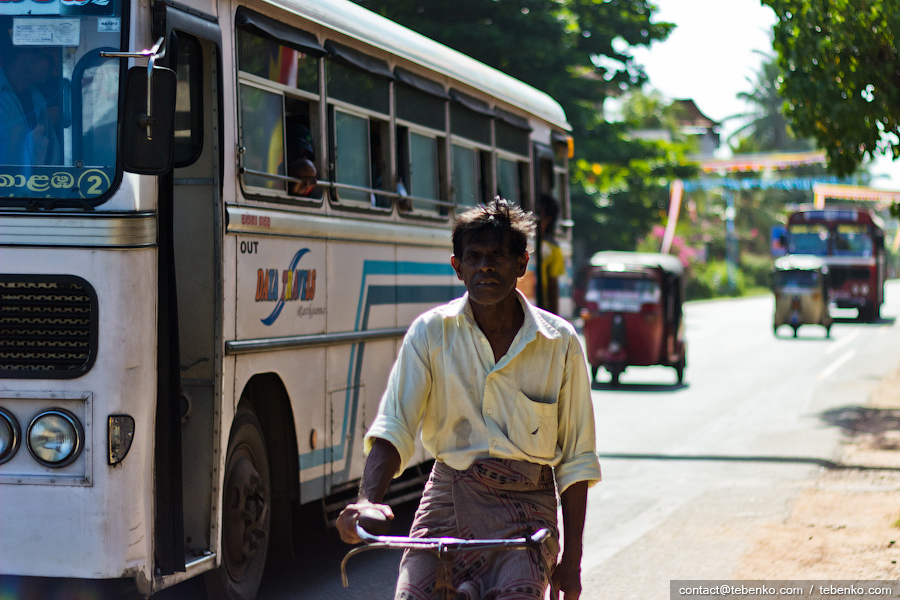 22
22At first we thought that local drivers not in words familiar with power and creations of George Lucas. Another explanation of how they manage to avoid an accident, we could not find. But later it turned out, neither luck nor prayer Buddha does not protect against the harsh laws of physics. Participants accident that we saw on the island first were just buses, besides the collision was with discharge of hard — forehead to forehead. Do not think that the drivers had big chances to stay alive. The next accident "lucky" to take part us. This happened in Colombo, our bus was traveling in the second lane until the driver has not planned to move first to pick up / disembark passengers. But a competing bus company refused to dismiss the place — probably from the very desire to get new passengers. In short, it was over the fact that our bus cut greedy (or, as one would say our drivers — "goat") and the prytersya side to the parked truck. Interestingly, both bus as if nothing had happened continued their further movement, however, the second — already without left mirror. Subsequently, a second bus caught up with us yet and drivers for old Sri Lankan tradition, decided to find out who is wrong. The only word we understood in their dialogue the word "police." The guards order has not arrived, and what can I say — even tiny fights or even biyochky was, not to mention the various pirouettes fighting Indian films. Pokrychaly bit and parted — a real boredom.
Finally, some useful hacks in our traditional rubric "Helpful hints". If you travel Sri Lanka with luggage and did not have time to take a seat on the bus, you should not miss. This country is very humane tradition — sitting passengers will be completely free your backpack on his hands. Sometimes not even need to ask about it — you will silently luggage. And another fact. Get to the Sri Lankan capital, Colombo, is easy. In the metropolitan area buses run almost every locality. In the bus, try to take the first place — they are not nursing or pregnant, and for other vulnerable social groups — monks. If suddenly there were no seats available and you happily saddled one of those places, then the first appearance on the horizon minister Buddha you have to release him bawdy place. Sitting next to a monk prohibited.
Finish column tips prices for travel in Sri Lankan bus. So fare per kilometer in the normal bus is about 1.2-1.5 rupees (1 US dollar is worth about 130 rupees). The minimum fare is Rs 12-15, if it is moved within a village or a small distance.

